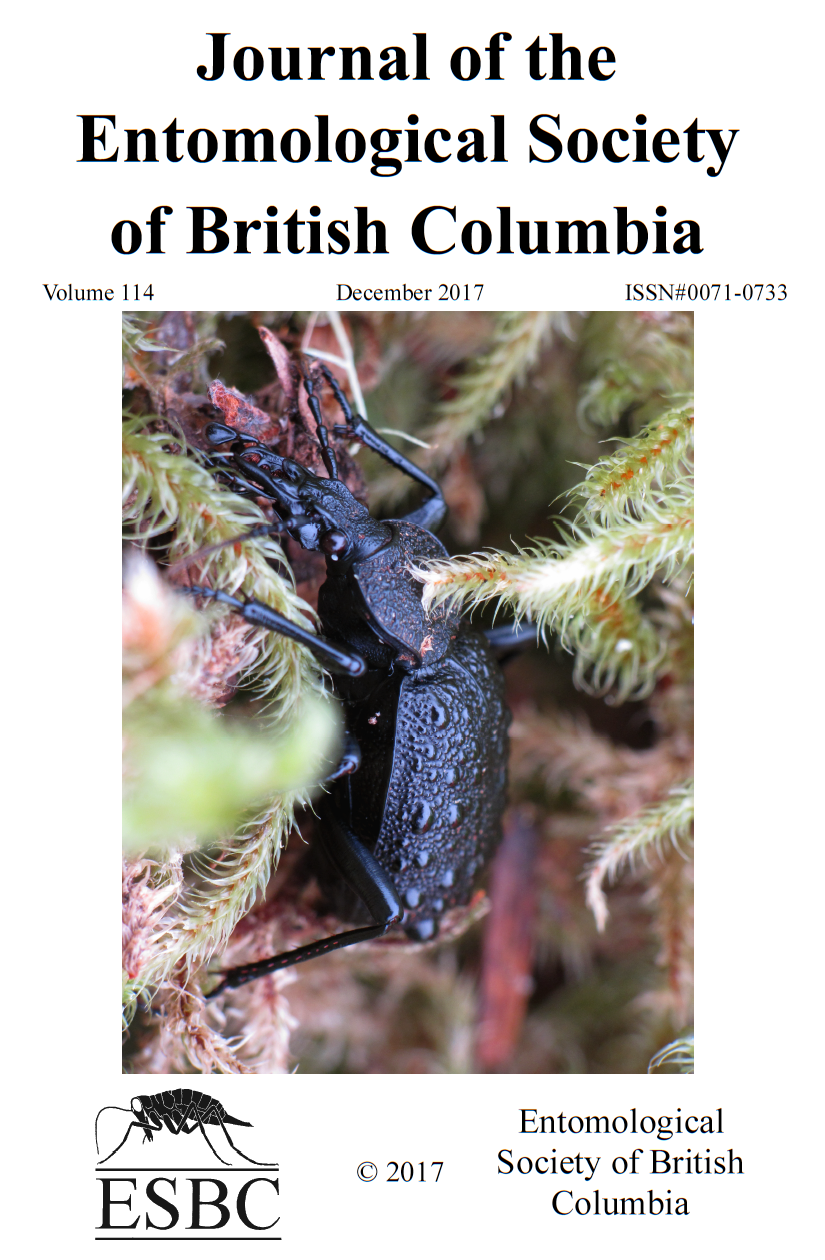Western balsam bark beetle, Dryocoetes confusus Swaine (Coleoptera: Curculionidae: Scolytinae), in situ development and seasonal flight periodicity in southern British Columbia
Abstract
In situ development and seasonal flight periodicity of the western balsam bark beetle, Dryocoetes confusus Swaine, was observed in subalpine fir, Abies lasiocarpa (Hook) Nutt. stands in southern British Columbia for three years between 1998 and 2002. This study shows developmental differences of western balsam bark beetle in downed and in standing, live subalpine fir. Larval development was slower in the downed trees. Recorded daily minimum phloem temperatures were significantly lower for downed trees than for standing trees during periods of beetle development and flight. There were no significant differences in the recorded daily maximum phloem temperatures between standing and downed trees until late summer, when downed trees saw cooler daily maximum phloem temperatures. This cooler host habitat would provide fewer degree days for insect development. Three distinct larval instars were identified by head capsule measurement. There were two flights per season, the first and major flight occurring from late June to late July, and the other smaller flight occurring in late August. A combination of minimum daily phloem temperatures reaching 5° C and maximum daily phloem temperatures approaching 20° C appeared to trigger the onset of beetle flight, with flight initiated earlier in the season at lower elevations.Downloads
Published
Issue
Section
License
Authors who publish with the Journal of the Entomological Society of British Columbia agree to the following terms:
-Authors retain copyright and grant the journal right of first publication with the work simultaneously licensed under a Creative Commons Attribution License that allows others to share the work with an acknowledgement of the work's authorship and initial publication in this journal.
-Authors are able to enter into separate, additional contractual arrangements for the non-exclusive distribution of the journal's published version of the work (e.g., post it to an institutional repository or publish it in a book), with an acknowledgement of its initial publication in this journal.
-Authors are permitted and encouraged to post their work online (e.g., in institutional repositories or on their website) prior to and during the submission process, as it can lead to productive exchanges, as well as earlier and greater citation of published work (See The Effect of Open Access).


